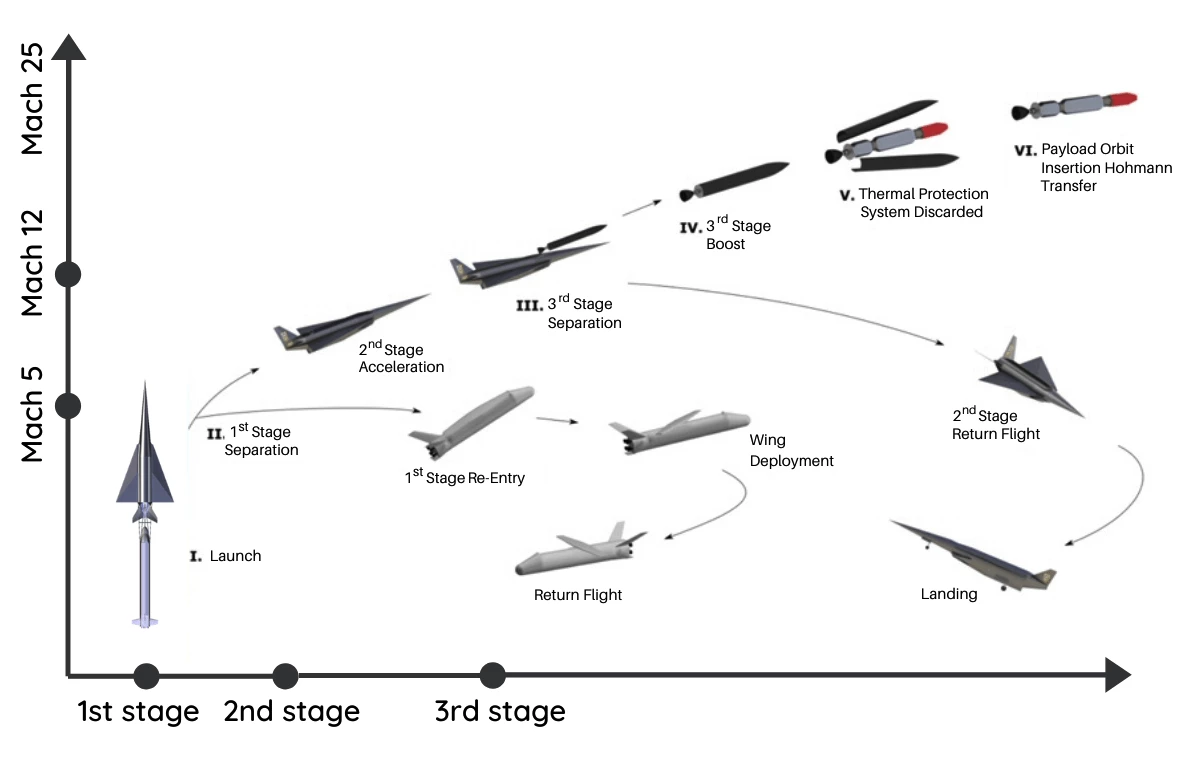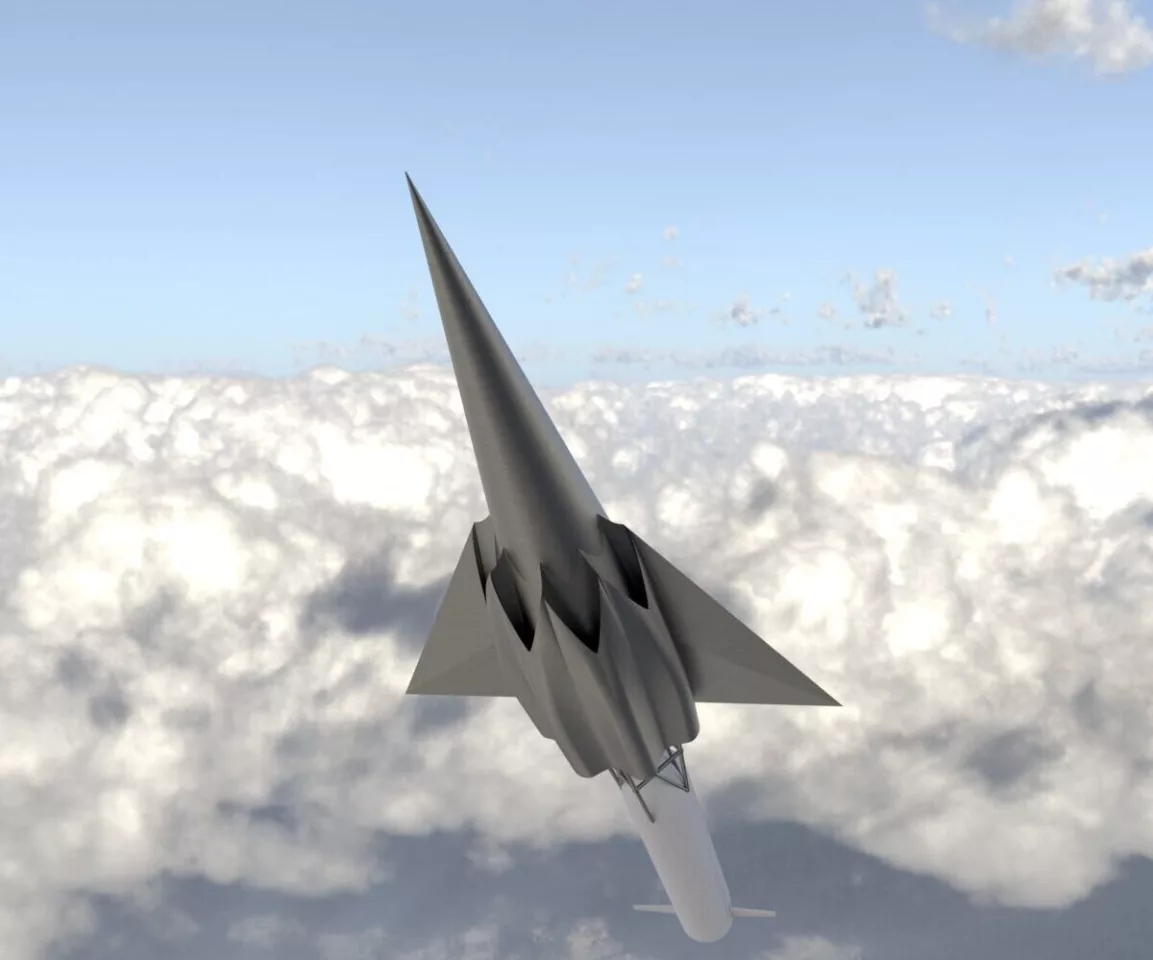Australian company Hypersonix Launch Systems is not only looking to make the delivery of satellites into orbit cheaper and more accessible, but also greener. It is developing a reusable launch system powered by green hydrogen that would deliver small satellites into orbit without producing any carbon emissions or other noxious gases – and is eyeing off hypersonic airliners further down the line.
Known as Wirraway, the three-stage launch system consists of the Delta Velos Orbiter and the Boomerang first-stage booster, both of which would be reusable. The Boomerang would accelerate the Delta Velos Orbiter to Mach 5 before detaching and, as its name suggests, returning back to base.
The Orbiter would then continue on, accelerating from Mach 5 to speeds of up to Mach 12 and making its way to the upper atmosphere from where it would release satellite payloads of 50 kg (110 lb), which would then be boosted to low-Earth orbit (LEO) or Sun-synchronous orbit (SSO). The Orbiter would then return back to base and land like a conventional plane, ready to be refueled to fly again, with the technology designed to enable quick turnaround times.

The Delta Velos Orbiter will be propelled by four Hypersonix Spartan scramjet engines, which the company says are the result of 30 years of research and “more than 6,000 ground firings and 11 sub-orbital flights through the HiFiRe and HyShot programs.” These programs also provided direct experience for many of Hypersonix's staff.
Made from 3D-printed ceramic matrix composite (CMC) components produced using next-gen additive manufacturing technology at the University of Sydney, the Spartan is self-igniting, reusable and contains no moving parts, enhancing its reliability. It also provides carbon-neutral propulsion as it is powered by hydrogen generated using solar power and emits only water vapor. The team is hoping to have the Delta Velos Orbiter in the air around the end of 2024.

However, the company will start smaller to validate the efficacy of the launch system and the speed, reusability and range of the vehicle design, starting with the Dart AE, a scaled-down technology demonstrator that will measure around 2.8 m (9.2 ft) long. It will be powered by just one Spartan engine and have a range of 500 km (311 miles). That project will kick off early this year, with the goal of a maiden launch in Q1 of 2023.
A larger Delta Velos Demonstrator will follow. Measuring 5.5 m (18 ft) long, with a wingspan of 2 m (6.6 ft) and a fuselage diameter of 0.6 m (1.9 ft), it will have four Spartan scramjet engines giving it a range of 2,500 km (1,553 miles) and a top speed of Mach 12. It is slated to take to the skies in Q4 of 2023.
Once the design has been proven, then comes the full-size Delta Velos Orbiter, which will measure 12 m (39 ft) in length, have a wingspan of 3.5 m (11.5 ft) and a diameter of 1 m (3.3 ft).

Because the Orbiter is designed to work with any booster, enabling it to launch from any launch site, it is not until the Delta Velos is flying that Hypersonix will look to develop the Boomerang booster, in partnership with an existing rocket manufacturer. While the choice of technology hasn’t been established, the company’s preference is for the Boomerang booster to be green-hydrogen fueled as well.
And the company doesn’t plan to stop with delivering satellites into orbit. While it will first focus on maturing the technology using unmanned vehicles, it will also look to develop hypersonic airliners that could carry passengers from Australia to the US east coast in just 2.5 hours.
Check out a video from the team below.
Source: Hypersonic Launch Systems










